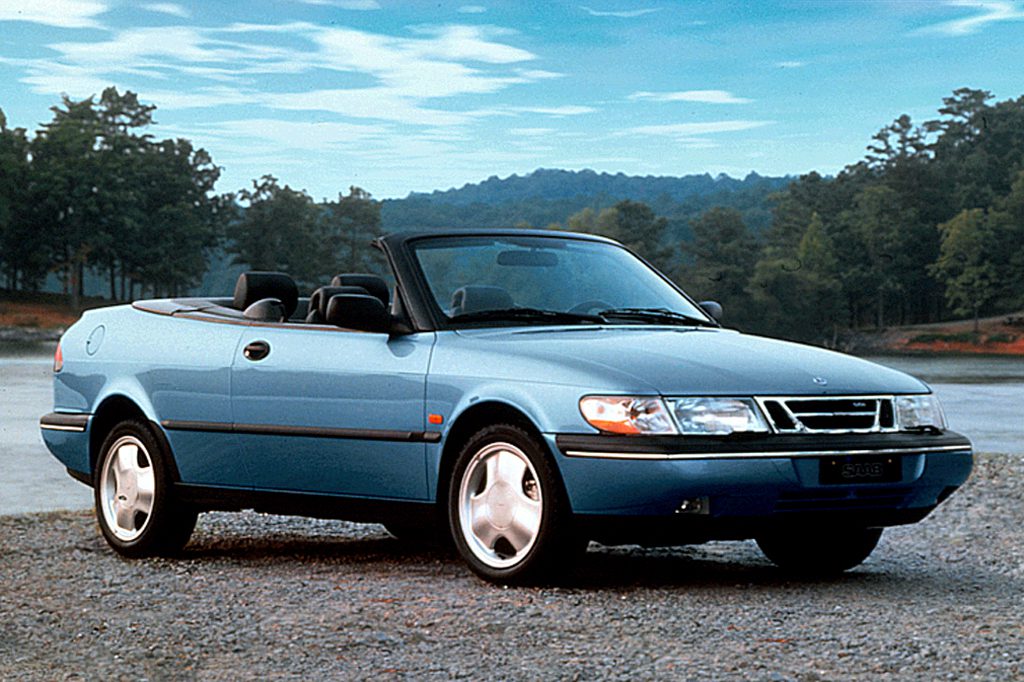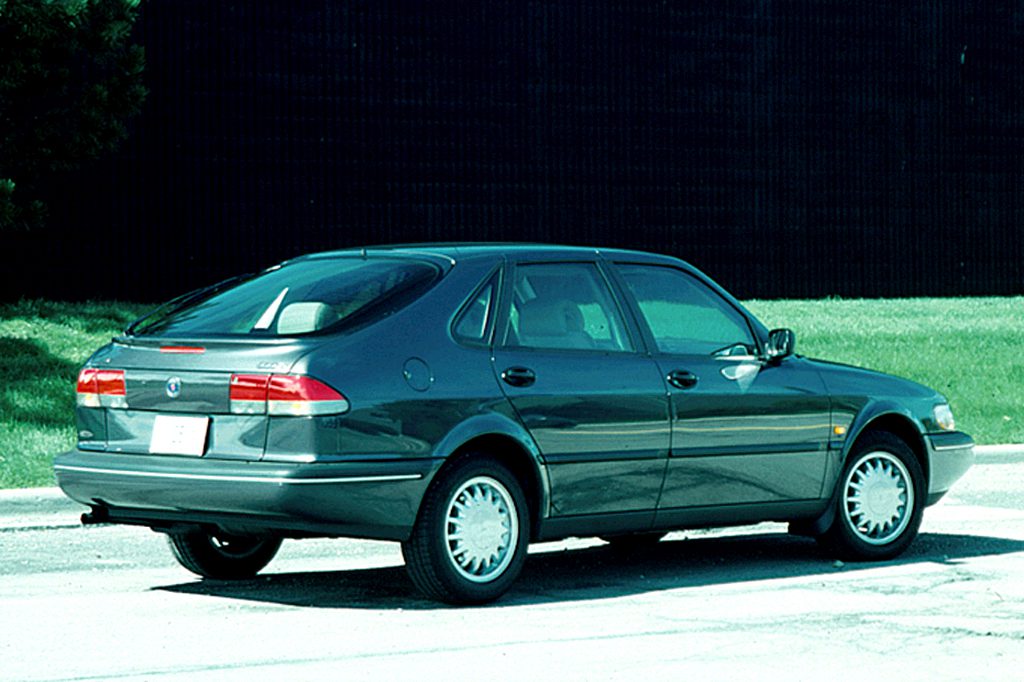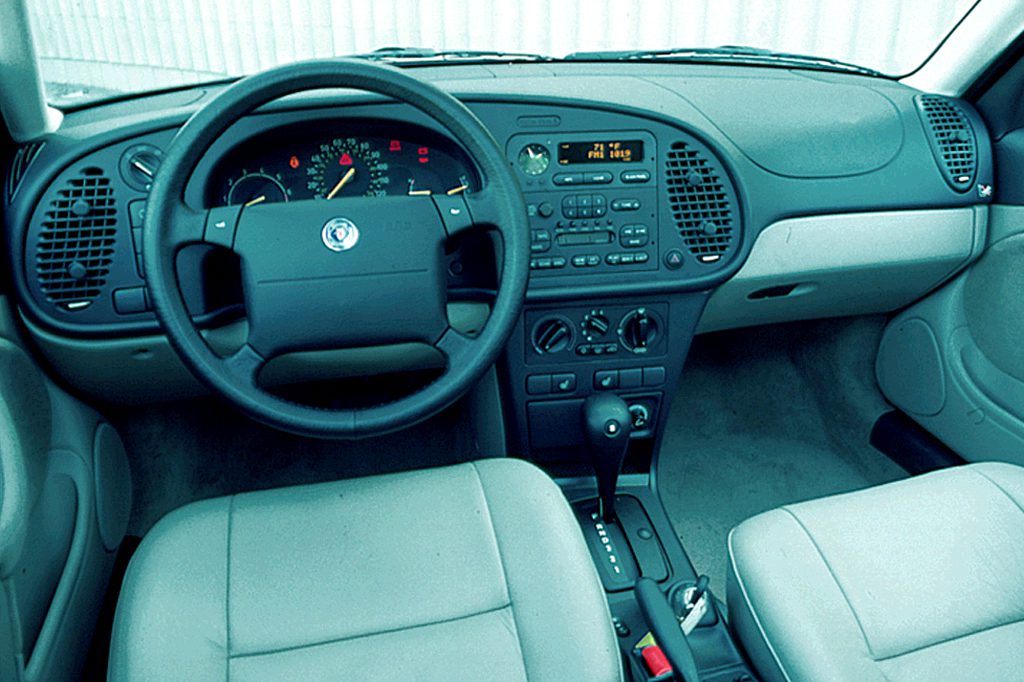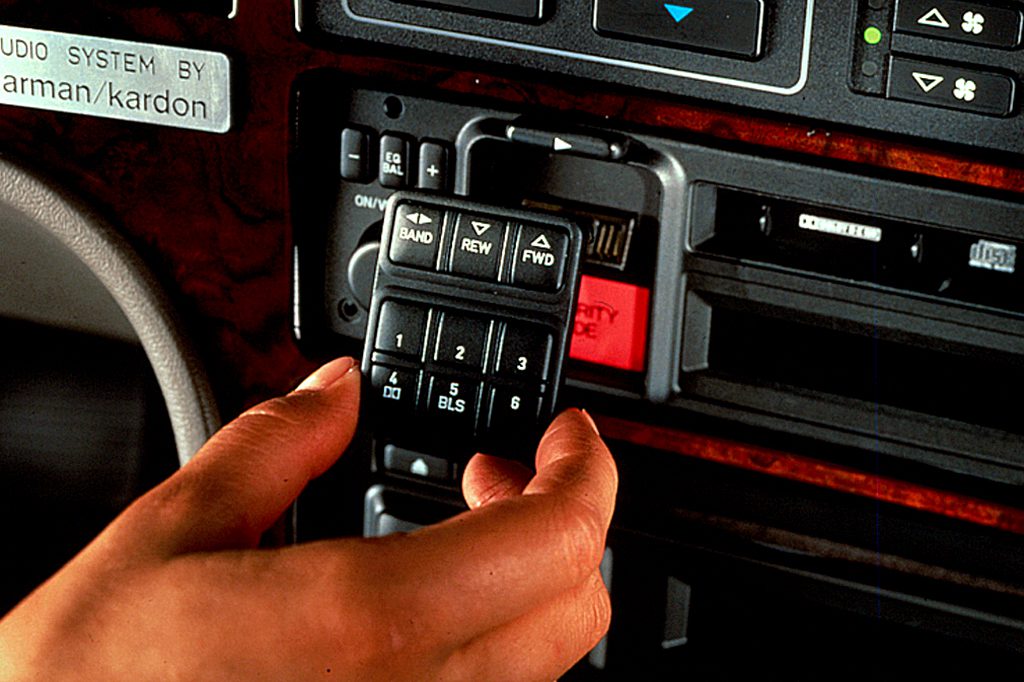| Premium midsize car; Built in Sweden |
|
|
| Good condition price range: $1,500 – $4,100* |

1996 Saab 900 SE Turbo 2-door convertible

1996 Saab 900 SE Turbo 4-door hatchback

1994 Saab 900 S 4-door hatchback

1994 Saab 900 S interior

1995 Saab 900 Stereo w/detachable face
| Pros: |
|
| Cons: |
|
Mainstream shoppers interested in a near-luxury car still aren’t likely to put the Saab 900 on their must-see list, but we credit Saab with making a better 900 for those who love and appreciate its quirky nature.
Overview
The 1994 Saab 900 was the first new 900-series model in 15 years. It retained its front-wheel drive and rode on a longer wheelbase, but was two inches shorter and was the first Saab to offer a V6. Initially offered as a 4-door hatchback in both 900S and 900SE trim, the 2-door hatchback and convertible arrived later in the year. Two-doors and convertibles came equipped with a turbocharged 185-horsepower, 2.0-liter 4-cylinder engine. The 900S came with a 150-horsepower, 2.3-liter 4-cylinder. The 900SE 4-door came with the new 170-horsepower 2.5-liter V6. A 5-speed manual was standard and a 4-speed automatic was optional. Standard were dual airbags and 4-wheel antilock disc brakes.
Yearly Updates
| 1995 900 Model lineups and powertrain combinations remain unchanged for 1995. |
| 1996 900 The turbocharged 2.0-liter 4-cylinder engine becomes available on the 4-door model for ’96 and can be paired with a 4-speed automatic for the first time. The optional V6 comes only with the automatic transmission for ’96. Appearance changes include a standard rear spoiler for the 2-door and rear body panel styled to blend with the headlamps. |
| 1997 900 The primary change for 1997 is the addition of larger front brakes, designed to aid stopping performance and extend pad life. |
| 1998 900 Saab drops the V6 engine in all 900 models. A replacement model called the 9-3 would arrive for ’99. |
